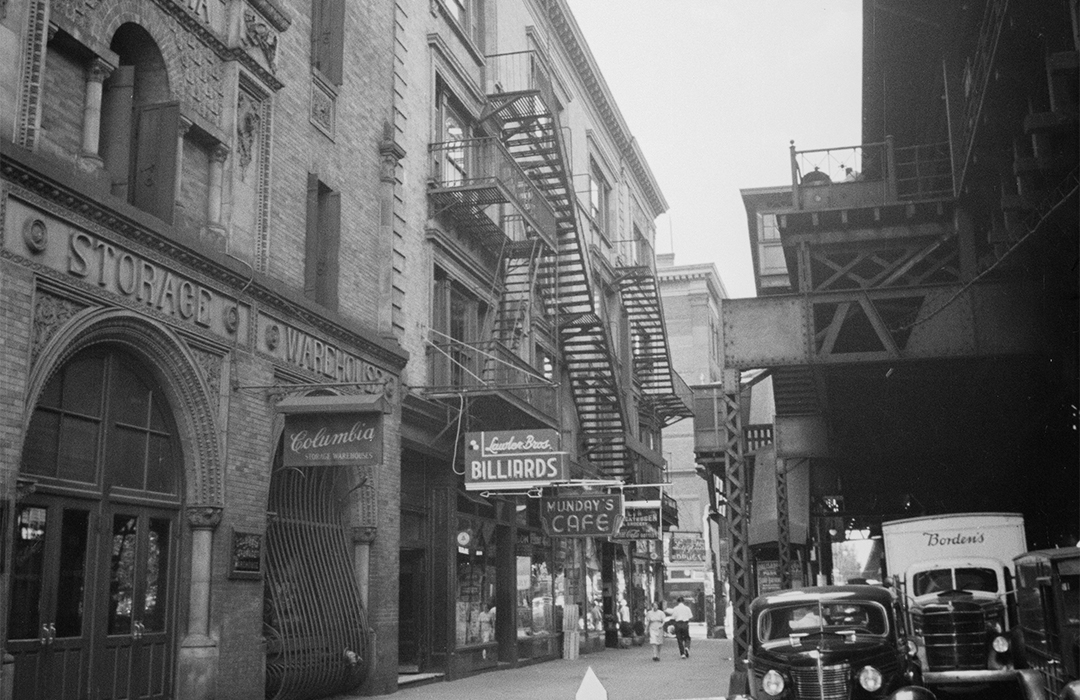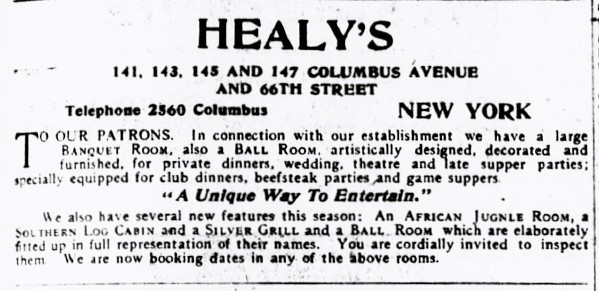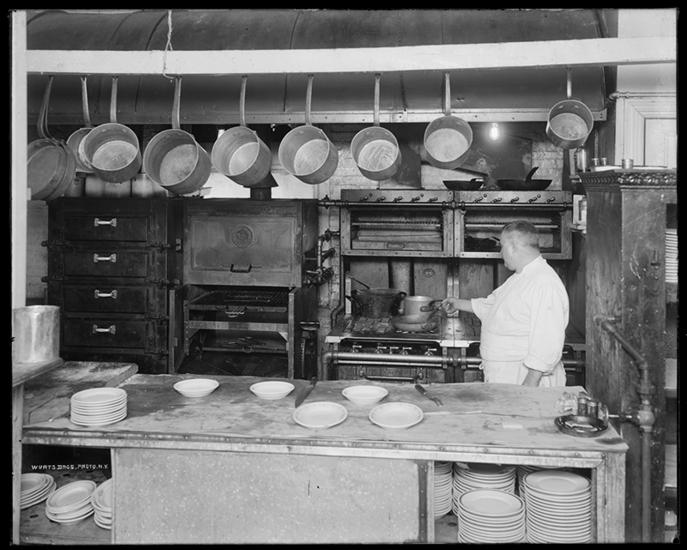
Healy’s Restaurant
by Tom Miller
Thomas J. Healy arrived in New York from Ireland in 1886 at the age of 15. On October 27, 1898, he signed a lease for the ground floor space of 141 Columbus Avenue, a two-story building on the northeast corner of 66th Street. There he established Healy’s restaurant. The upper floor was occupied by the architectural and building firm List & Lennon. Next door was a low-rise annex to the Columbia Storage Warehouse, which took up the northern half of the Columbus Avenue blockfront.
In 1900 real estate developer John O. Baker demolished the properties at 141 through 147 Columbus Avenue as the site of a modern, four-story structure. He had already negotiated the lease of the first and second floors to Thomas Healy, and as the building rose, he rented the third and fourth floors to the Columbia Storage Warehouse.
Something went awry with the Columbia Storage Warehouse lease, and instead John F. Cockerill moved the offices of the construction firm Thomas Cockerill & Son into one of the upper floors. Among the company’s first projects upon moving in was the erection of the Bronx Park’s new monkey house in 1901. Two years later Thomas Cockerill & Son would begin construction of the “westward wing” of the Museum of Natural History on Central Park West.
The raids became so expected that crowds would amass along Columbus Avenue in anticipation of the excitement.
In the meantime, Healy’s restaurant became a destination spot. On the second floor was a ballroom and banquet room, and in 1909 Healy introduced theme rooms—the African Jungle Room, the Southern Log Cabin, and the Silver Grill. As his business grew, Healy purchased the building, and he made continual improvements. In 1912 he replaced the windows; in 1914, he added a freight elevator; and in 1916, he updated the bathrooms and passenger elevator and added a skylight.
Not everything went smoothly for Thomas Healy. In 1913 he faced relentless harassment by Police Inspector Dwyer in the form of nightly raids. (Dwyer was, most likely, trying to force Healy into paying to stop the persecution.) The raids became so expected that crowds would amass along Columbus Avenue in anticipation of the excitement. On August 14, 1913, the New-York Tribune reported, “Three thousand persons gathered around the restaurant, at Columbus avenue and 66th street, at midnight…The crowd waited around until long after the usual hour for raiding.”
But there would be no raid that night. District Attorney Whitman, hearing of the intimidation, had gone there earlier to witness one for himself. He convened a grand jury and then, on August 14, issued warrants for the arrest of Inspector Dwyer and 14 policemen under him. In the face of the evidence presented, Magistrate Deuel called the police actions “acute and dangerous.”
With that problem behind him, Healy faced another in the spring of 1915. A group of socialites, including Eugenia Kelly and Mrs. Henry Moskowitz, waged war on what they called “tango parlors.” They considered the sensuous tango dance to be immoral and warned that tango parlors were “the source of greatest menace to young women of wealth in this city.” On May 27, 1915, The Sun reported, “the Mayor’s personal attention is to be called to the dangers said to lurk in such resorts.” The article noted, “the dancing craze had produced a new type of young man—the ‘tango boys’—who usually stalk about at the afternoon tea dances and get $5 from fashionable young girls for dancing with them.” Among the establishments in the reformers’ crosshairs was Healy’s restaurant.
“the dancing craze had produced a new type of young man—the ‘tango boys’—who usually stalk about at the afternoon tea dances and get $5 from fashionable young girls for dancing with them.”
But there was by far a greater threat on the horizon—Prohibition. On May 15, 1922, The Mixer & Server announced:
Healy’s, for years one of the best known restaurants in New York, soon is to be closed, a victim of prohibition. Thomas J. Healy, the proprietor, has sold the establishment to several Chinese, who will convert it into a chop suey emporium…The third floor of the building on Columbus Avenue at Sixty-sixth Street, formerly a ball room, has been leased to a dancing teacher. The second floor, where the gayest of jazz bands played in former days, now hears only the clicking of pool balls.
In 1927 the former ballroom space was converted to Letrim Halls, a rental venue for large gatherings and meetings. It became McGovern’s Halls in 1920, followed by the Banba Ballroom in 1935.
Disaster struck in 1941 when fire destroyed the top two stories. The lower two floors were renovated into what the Department of Buildings documents now described as a “two story taxpayer” with stores on the ground floor and a bowling alley above. A subsequent renovation in 1949 resulted in offices on both levels.
On November 1, 1957 ABC Television Center Co. purchased the building from the Healy estate, for $375,000 (about 3.6 million in 2023 dollars). The company demolished it in 1990 to be replaced by the 10-story modernist office building designed by Kohn Pederson Fox that survives.
Tom Miller is a social historian and blogger at daytoninmanhattan.blogspot.com/
LEARN MORE ABOUT
141-147 Columbus Avenue
Keep
Exploring
Be a part of history!
Shop local to support the business currently at 141-147 Columbus Avenue:




